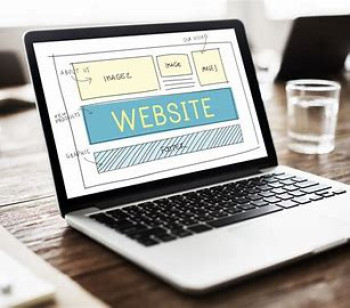As a small business owner, establishing a robust online presence is essential in today's digital era. With more consumers turning to the internet for services and products, having a website can provide a significant advantage. This ultimate guide to web development for small businesses covers everything you need to know about creating and optimizing a website that not only looks great but also generates leads and sales.
1. Why Your Small Business Needs a Website
A website serves as the digital face of your business. It’s the first place potential customers go when they hear about you or want to learn more. Here’s why having a website is crucial for small businesses:
- Credibility: A professional website makes your business appear more legitimate and trustworthy.
- Brand Visibility: A website helps you showcase your brand, mission, and services effectively.
- 24/7 Availability: Unlike a physical store, your website can operate around the clock, attracting customers anytime.
2. Choosing the Right Platform for Your Business Website
With so many options available, choosing the right platform to build your website is critical. Here's a comparison of the most popular website-building platforms:
- WordPress: The most flexible option, offering thousands of themes and plugins. Ideal for businesses that need control over customization.
- Wix: Known for its drag-and-drop simplicity, Wix is perfect for businesses that want to quickly launch a website with minimal effort.
- Squarespace: A beautiful platform, known for its design-centric themes, making it a solid choice for creatives.
- Shopify: If you’re running an e-commerce store, Shopify is the go-to platform. It offers powerful tools for managing products, payments, and shipping.
3. Designing Your Website for Maximum Impact
Design is more than just aesthetics—it’s about creating an experience for your visitors that drives them to take action. Here’s what you need to focus on:
- User Experience (UX): Ensure your site is easy to navigate with a clear layout and intuitive structure.
- Responsive Design: Your website should look good on all devices, whether it’s a desktop, tablet, or smartphone.
- Call to Action (CTA): Every page on your website should include a compelling call to action, whether it’s “Contact Us,” “Get a Quote,” or “Buy Now.”
4. Optimizing Your Website for SEO
If you build a website and no one visits it, what's the point? SEO (Search Engine Optimization) is what will help your website appear in search results when people look for businesses like yours. Here's how to get started with SEO:
- Keyword Research: Start by identifying the keywords your target audience is searching for using tools like Google Keyword Planner, SEMrush, or Ahrefs.
- On-Page SEO: Ensure your titles, meta descriptions, headers, and URLs are all optimized with your target keywords. Add internal links to guide visitors to other relevant pages.
- Mobile Optimization: Google prioritizes mobile-friendly websites. Ensure your website is responsive and loads quickly on all devices.
- Local SEO: Make sure to optimize for local search results if you're targeting a specific region. Claim your Google My Business listing and encourage customers to leave reviews.
5. Tools and Resources for Small Business Web Development
To streamline your web development and marketing efforts, use the right tools. Here are some essential tools that can help small businesses:
- Google Analytics: To track website performance, user behavior, and other key metrics.
- Canva: A user-friendly design tool for creating professional graphics for your website.
- Mailchimp: For email marketing and building a customer list.
Conclusion: Web development doesn’t need to be a complicated or expensive process for small businesses. By focusing on the right platform, design, SEO, and tools, you can create a website that drives leads, sales, and growth. Ready to start building your website? Let us help you with expert web development services tailored to small businesses.











